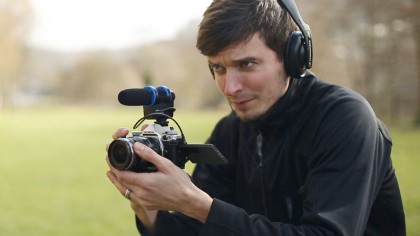Video A-Z
Baffled by video jargon? Our A-Z covers basic know-how right through to pro hardware

Still cameras can use flash to illuminate subjects in dark conditions, but this is obviously no good for video because you need 'continuous lighting' instead. In the past, this mean hot, heavy tungsten and fluorescent lighting which consumed a great deal of power and was difficult or impractical to use on location, but LED panels have changed all of that. LED panels produce plenty of light, especially given the improved performance at high sensitivities with today's sensors. They run much cooler, they use less power and they're much more portable. You can get LED panels in all sizes, from small units that clip on to the camera's accessory shoe to much larger panels that attach to regular lighting stands. Smaller units typically use a set of AA batteries, while larger units often come with rechargeable battery packs that simply clip to the back.
Colour is a key factor here. If you're shooting video using artificial light you need to match the camera's white balance setting with the lights. Not all LED panels match standard light sources and white balance settings, and some have nasty green 'spikes' like fluorescent lights.
You don't have to use LED panels, and older 'continuous' light sources like tungsten, fluorescent and halogen lighting kits can be useful too, as long as you match up the white balance setting.
Get daily insight, inspiration and deals in your inbox
Sign up for breaking news, reviews, opinion, top tech deals, and more.

Rod is an independent photographer and photography journalist with more than 30 years' experience. He's previously worked as Head of Testing for Future’s photography magazines, including Digital Camera, N-Photo, PhotoPlus, Professional Photography, Photography Week and Practical Photoshop, and as Reviews Editor on Digital Camera World.